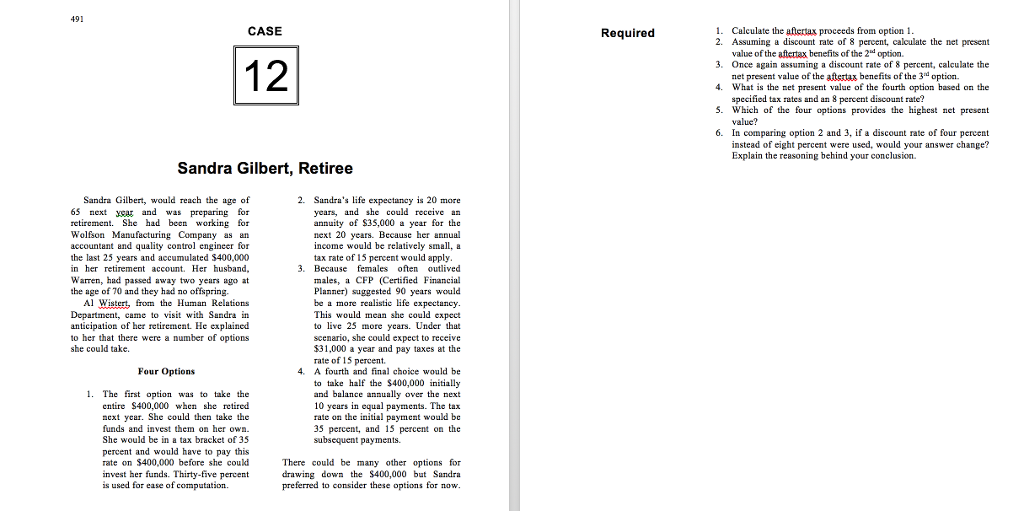 In comparing option 2 and 3, if a discount rate of four percent instead of eight percent were used, would your answer change?
In comparing option 2 and 3, if a discount rate of four percent instead of eight percent were used, would your answer change?
491 CASE Required 1. Caleulate the aftiertax proceeds from option 1 2. Assuming a discount rate of 8 percent, calculate the net present 12 value of the aftertax benefits of the 2d option Once again assuming a discount rate of 8 percent, calculate the net present value of the atertas benefits of the 3d option. What is the net present value of the fourth option based on the specified tax rates and an 8 percent discount rate? Which of the four 4. S. 6. options provides the highest net p In comparing option 2 and 3, if a discount rate of four percent instead of eight percent were used, would your answer change? Explain the reasoning behind your conclusion. Sandra Gilbert, Retiree Sandra Gilbert, would reach the age of 65 next a was retirement. She had been working for Wolfson Manufacturing Company as an accountant and quality control engineer for the last 25 years and accumulat in her retirement account. Her husband, Warren, had passed away two years ago at the age of 70 and they had no offspring. 2. Sandra's life expectancy is 20 more years, and she could receive an annuity of S35,000 a year for the next 20 years. Because her annual income would be relatively small, a tax rate of 15 percent would apply and was preparing ed $400.000 3. Because females often outlived males, a CFP (Certified Financial Planner) suggested 90 years would be a more realistic life expectancy This would mean she could expect to live 25 more ycars. Under that scenario, she could expect to receive 31.000 a year and pay taxes at the rate of 15 percent. from the Human Relations Department, came to visit with Sandra in anticipation of her retirement. He eaplained to her that there were a number of options she could take. Four Options 4. A fourth and final choice would be to take half the $400,000 initially and balance annually over the next 10 years in equal payments. The tax rate on the initial payment would be 35 percent, and 15 percent on the subsequent payments 1. The first option was to take the entire $400.000 when she retired next year. She could then take the funds and invest them on her own. She would be in a tax bracket of 35 percent and would have to pay this rate on $400,000 before she could nvest her funds. Thirty-five percent is used for ease of computation There could be many other options for drawing down the $400,000 but Sandra preferred to consider these options for now
 In comparing option 2 and 3, if a discount rate of four percent instead of eight percent were used, would your answer change?
In comparing option 2 and 3, if a discount rate of four percent instead of eight percent were used, would your answer change?





